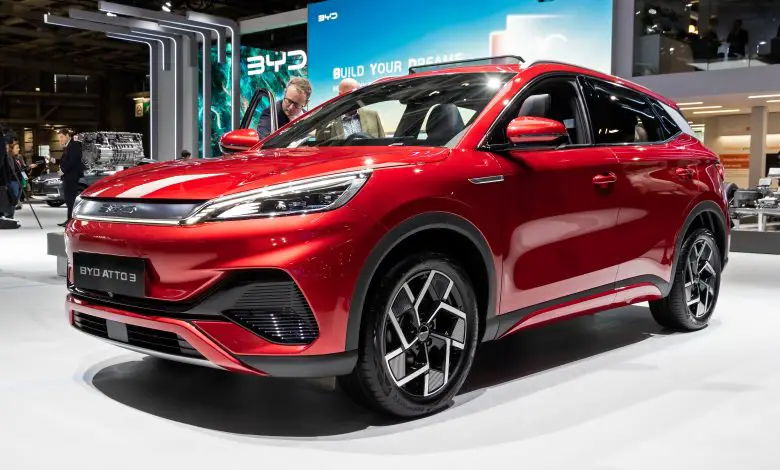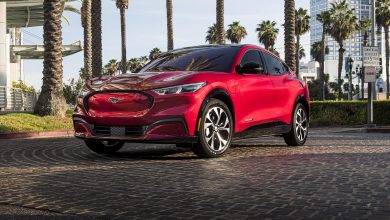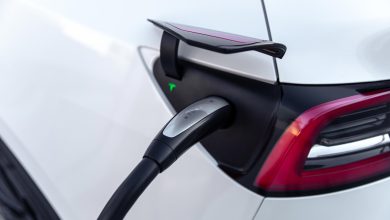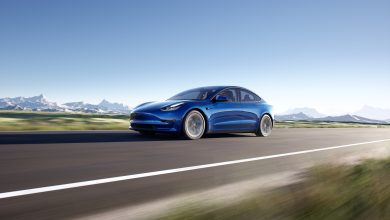Scientist Discovers EV Batteries That Won’t Explode After Hurricanes
Battery TechEV NewsThe U.S. Department of Energy (DOE) has earmarked $42M for battery development

Electric vehicle batteries were blowing up after Hurricane Ian made landfall. The Category 4 Atlantic hurricane led to the flooding of Florida and was blamed for more than 110 deaths. Saltwater from Hurricane Ian came into contact with EV batteries causing them to burst into flames.
A University of Central Florida (UCF) researcher wants to prevent a repeat of that ugly incident with the development of a technology that can prevent EV batteries from bursting into flames after a hurricane. The detail of the study was published in Nature Communications.
In the new technology, an aqueous battery replaces the highly flammable and volatile organic solvents found in lithium-ion batteries. The result is a battery that charges faster, is safer, has the same power as lithium-ion batteries, and will not short-circuit during flooding.
“During Hurricane Ian, many EVs caught fire after being submerged in floodwater,” said the leader of the research Yang Yang, an associate professor at UCF’s NanoScience Technology Center. “The reason is that saltwater corrodes the battery and leads to short circuits, which ignites the flammable solvents and other components. Our battery makes use of salt water as an electrolyte, ditching the highly volatile solvents.”
The new design of the battery using nano-engineering overcomes the limitations of its predecessor including poor stability and slow charging times. In other words, the battery designed by UCF charges faster and can reach full charge in 3 minutes. This is a huge chunk off the hours it takes to charge lithium-ion batteries.
Overcoming the challenges suffered by previous aqueous battery designs
This is not the first time that scientists have attempted an aqueous battery design. However, the previous designs suffered from instability, low energy output as well as corrosion, and the growth of harmful metallic structures on the negative electrode called dendrites.
The use of salt water as the battery’s liquid electrolyte allowed the UCF researchers to introduce naturally occurring metal ions found in saltwater like magnesium, calcium, potassium, and sodium to create a dual-cation battery with the ability to store more energy.
This design made it possible for them to overcome the sluggishness of previous aqueous battery designs that made use of single-cation. To solve the problem of corrosion, dendrite growth, and instability, the scientists created a 3D zinc-copper anode, engineered to look like a forest, which contains a thin zinc-oxide protective layer on top.
The new nano-engineered surfaces that share a resemblance with a birds-eye view of a forest gave the scientists the power to precisely control electrochemical reactions which increase the stability and charging speed of the battery.
One of the breakthroughs the scientists achieved with the zinc-oxide layer was that it was able to prevent the growth of dendrites on zinc. This was confirmed using optical microscopy.
“These batteries developed in my lab that make use of the new materials will stay safe even if they are misused or flooded by saltwater,” Yang said. “Our discovery will boost EV technology and continue to promote it as a safe and reliable means of travel.”
The technology which is awaiting a patent is available for licensing through the Office of Technology Transfer at the university. The United States National Science Foundation and American Chemical Society Petroleum Research Fund supported the research with funding.
U.S. Department of Energy earmarks $42 million for advanced EV battery development in America
On Tuesday, January 10, 2023, the U.S. Department of Energy (DOE) announced that it has earmarked $42 million to fund 12 projects with the aim of strengthening the domestic supply chain for advanced EV batteries.
The projects selected for the Electric Vehicles for American Low-Carbon Living (EVs4ALL) program will help to boost domestic EV adoption by creating batteries that charge faster, last longer, have better overall range retention, and perform efficiently in freezing temperatures.
According to the DOE, transport sector electrification is key to the rapid decarbonization of the American economy and eliminating heavy-emitting industries. DOE is supporting President Biden’s goal of having America produce advanced technologies that will power the global clean energy transition.
“The sale of EVs has tripled since the Biden administration. Through addressing battery efficiency, affordability, and resilience, the projects announced today will make EVs more attractive to drivers,” said Jennifer M. Granholm, the U.S. Secretary of Energy.
The EVs4ALL program is managed by DOE’s Advanced Research Projects Agency-Energy (ARPA-E). The ARPA-E selected 12 teams from national laboratories, universities, and the private sector to find solutions to key technology barriers on the path of EV adoption through the development of advanced battery technologies. The participating teams are;
- Zeta Energy
- Virginia Tech
- University of Maryland
- Tyfast Energy
- South 8 Technologies
- Solid Power Operating
- Sandia National Laboratories
- Project K
- The Ohio State University
- National Renewable Energy Laboratory
- Ampcera
- 24M Technologies
Tesla files for Texas factory expansion
This January, Tesla filed with the Texas Department of Licensing and Registration to expand its EV factory in Austin. Details of the filing show that Tesla wants to spend over $770 million on the construction of facilities in the location which will include cathode and drive unit manufacturing, battery cell testing and manufacturing, a die shop, and more.
Tesla opened its EV battery facility in April 2022. Today, some of its Model Y crossover utility vehicles are produced in Austin. The company also plans to mass-manufacture its Cybertruck and unconventional pickup there.
In an interview with Tesla Owners Silicon Valley, the company’s CEO Elon Musk described the Texas factory as “gigantic money furnaces”. With new guidelines expected in March that will require automakers to source their battery locally to qualify for the Inflation Reduction Act tax credits, more EV makers are investing heavily in battery facilities to make the cut.




